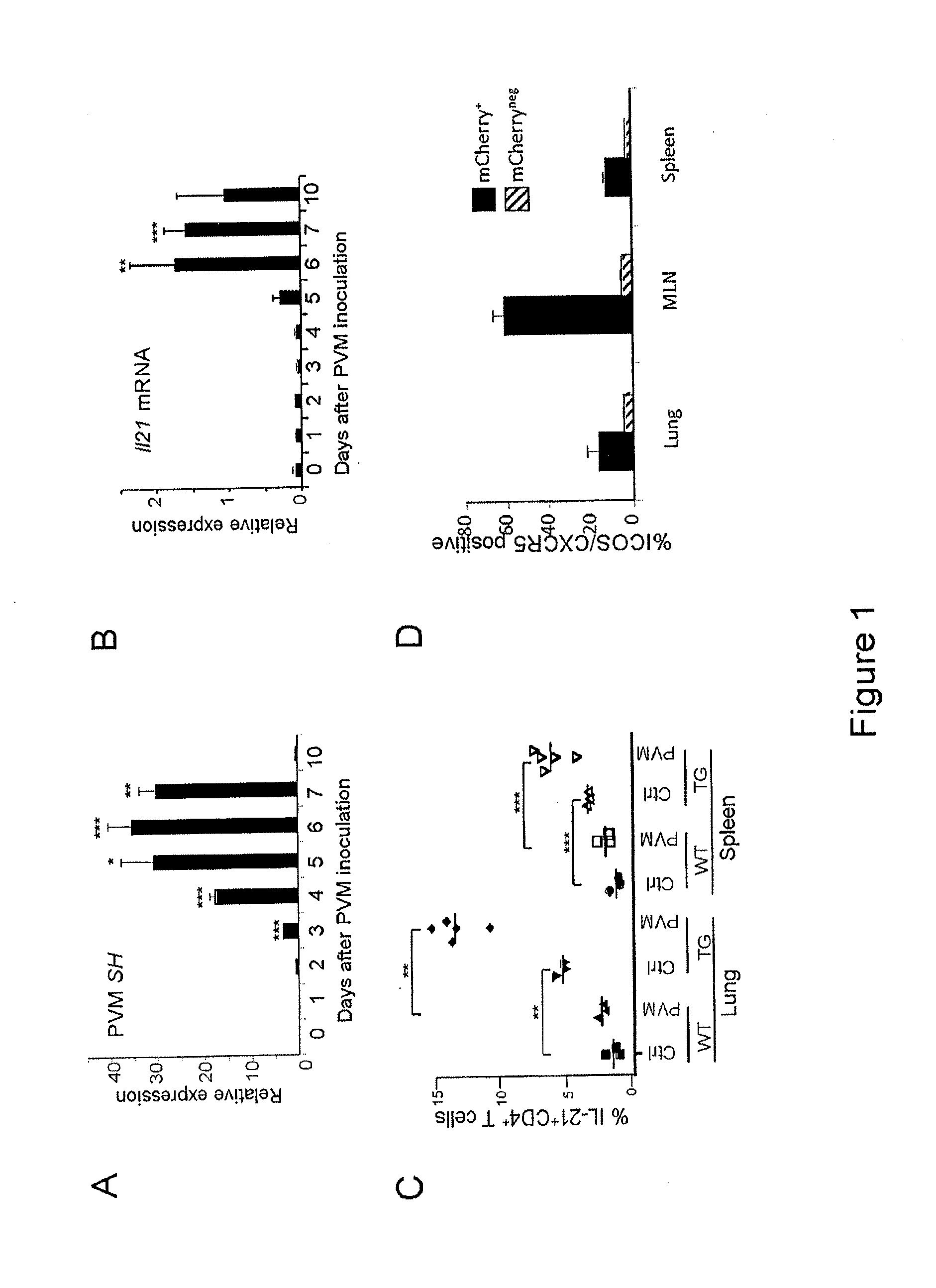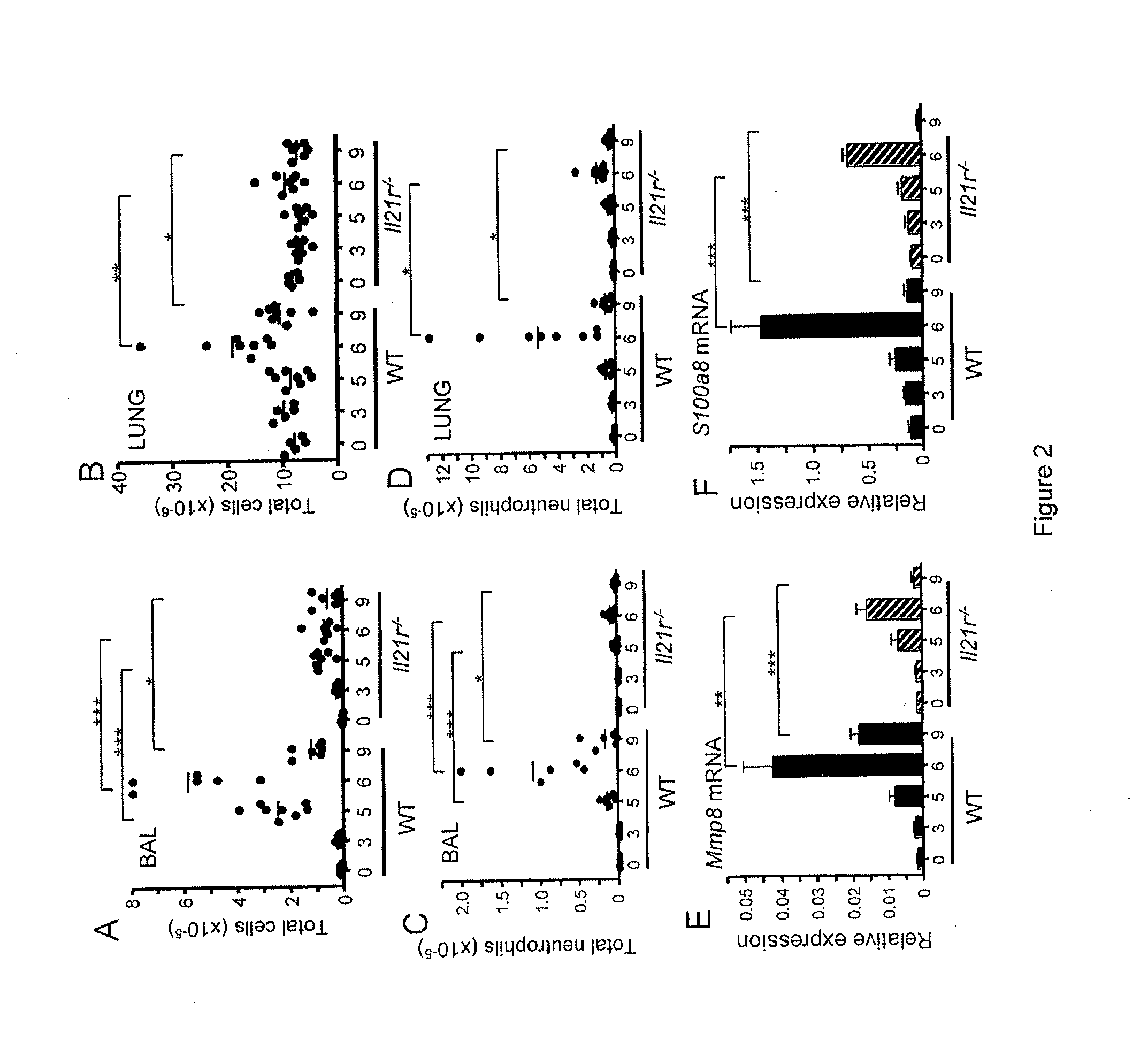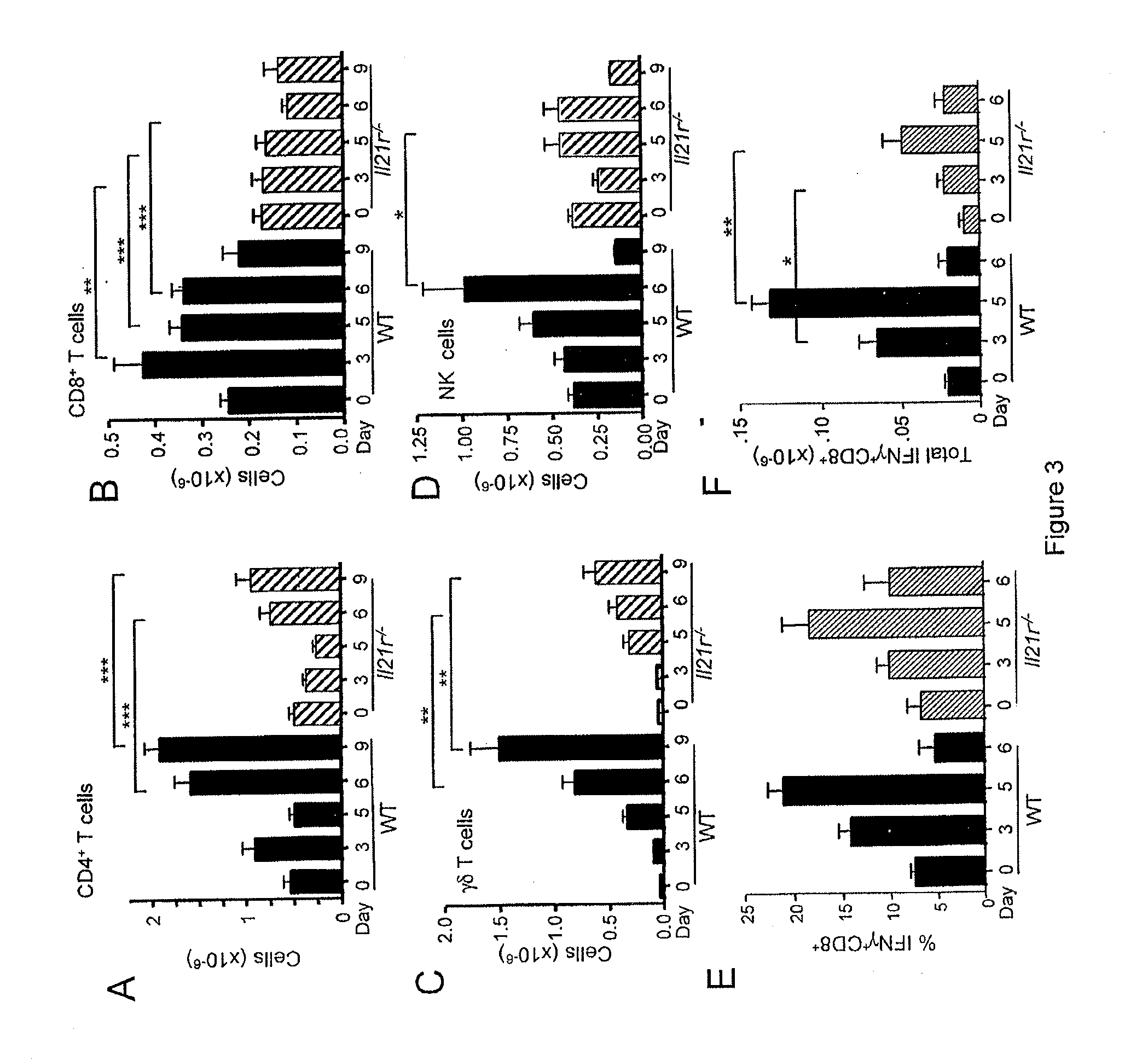Methods of treating or preventing viral diseases by blocking interleukin-21
a technology of interleukin-21 and viral diseases, which is applied in the direction of antibody medical ingredients, peptides/protein ingredients, peptides, etc., can solve the problems of reducing the severity of the disease, unable to develop effective treatments for viral diseases, and few effective treatments for many viral diseases, so as to prolong the survival of mammal suffering, and reduce the activation or recruitment of immune cells
- Summary
- Abstract
- Description
- Claims
- Application Information
AI Technical Summary
Benefits of technology
Problems solved by technology
Method used
Image
Examples
example 1
[0095]This example demonstrates that IL-21 expression is induced following infection with PVM.
[0096]To determine whether IL-21 is expressed in the lung in response to PVM infection, wild type (WT) mice were inoculated intra-nasally with PVM virions, and Il-21 mRNA expression was measured in the lung at time points during the 10 days following infection. Expression of the PVM SH gene as an indicator of virus burden was greatest at day 6 after inoculation (FIG. 1A). As expected, infected mice developed pneumonia and began to succumb to infection starting at day 7 and SH gene expression declined, with it no longer being detected among survivors at day 10 (FIG. 1A). Il-21 mRNA was detected as early as day 5, with a peak at day 6, and levels declined thereafter (FIG. 1B). Interestingly, at day 10, virus was no longer detected in lung tissue, but Il-21 mRNA could be detected in the surviving mice.
[0097]To identify IL-21-producing cells, transgenic reporter mice were used in which the mChe...
example 2
[0098]This example demonstrates reduced lung inflammation in response to PVM infection in Il21r− / − mice.
[0099]The increased numbers of IL-21-producing CD4+ T cells in the lung after PVM infection suggested that this cytokine might participate in antiviral host defense and / or viral pathogenesis. To investigate this possibility, WT and Il21r− / − mice were infected with PVM and cellular inflammatory responses were evaluated. Microscopy revealed that lung tissue from PVM-infected WT mice exhibited progressive, severe inflammation (severe cell infiltration) diffusely through the lung at days 5 and 6, whereas lungs from Il21r− / − mice had only mild and focal perivascular inflammation at these time points. Microscopy also revealed that infiltration of both neutrophils and lymphocytes were evident in the WT mice. Bronchoalveolar lavage (BAL) fluid from PVM-infected mice was also examined and significantly fewer cells were found in the BAL fluid from the Il21r− / − mice than from WT mice on days...
example 3
[0102]This example demonstrates reduced levels of IL-6 in lungs of PVM-infected Il21r− / − mice.
[0103]The inflammatory response to PVM in WT mice includes rapid infiltration of both neutrophils and lymphocytes into the lung, and, as noted above, these responses were reduced in Il21r− / − mice. Neutrophil infiltration in PVM infection is coordinated by multiple cytokines and proinflammatory chemokines (Bonville et al., J. Virol., 77:1237-1244 (2003); Bonville et al., J. Virol., 78:7984-7989 (2004)). In other settings, IL-17 has been shown to promote neutrophil responses, leading to the induction of cytokines and chemokines that augment the levels of neutrophil progenitors and the subsequent expansion of peripheral neutrophil populations (Ye et al., J. Exp. Med., 194:519-527 (2001)). Because IL-21 promotes the differentiation of IL-17-producing cells (Korn et al., Nature, 448:484-487 (2007); Nurieva et al., Nature 448:480-483 (2007); Zhou et al., Nat. Immunol., 8:967-974 (2007)), the leve...
PUM
| Property | Measurement | Unit |
|---|---|---|
| time | aaaaa | aaaaa |
| time | aaaaa | aaaaa |
| time | aaaaa | aaaaa |
Abstract
Description
Claims
Application Information
 Login to View More
Login to View More - R&D
- Intellectual Property
- Life Sciences
- Materials
- Tech Scout
- Unparalleled Data Quality
- Higher Quality Content
- 60% Fewer Hallucinations
Browse by: Latest US Patents, China's latest patents, Technical Efficacy Thesaurus, Application Domain, Technology Topic, Popular Technical Reports.
© 2025 PatSnap. All rights reserved.Legal|Privacy policy|Modern Slavery Act Transparency Statement|Sitemap|About US| Contact US: help@patsnap.com



